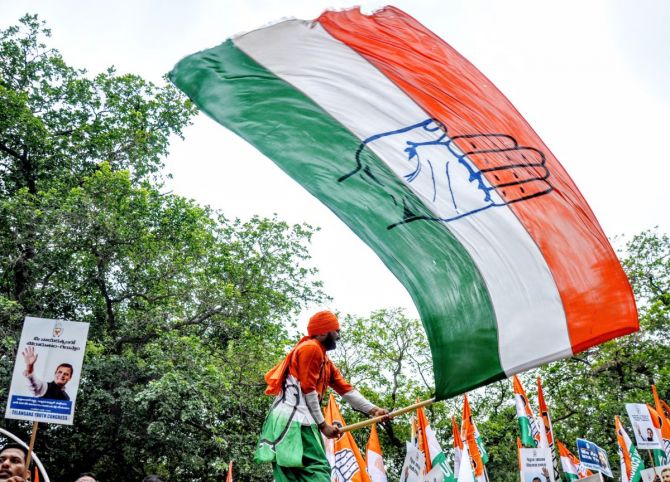The Congress is contesting 328 seats in the ongoing elections -- the lowest since Independence.

When the Congress was at its peak in 1957, nearly a third of all candidates contesting Lok Sabha elections belonged to the party.
Times change: This year less than 5 per cent candidates belong to the Congress, according to calculations based on data from Ashoka University, the Election Commission of India, and the party's Web site.
The Congress is contesting 328 seats in the ongoing elections -- the lowest since Independence. It works out to around 4.95 per cent of the more than 6,600 candidates in the first five phases of the seven-round elections.
The number is likely to decline as data for the last two phases come in. The party's lowest candidate share was in the 1996 elections -- 3.79 per cent (chart 1).

Before these elections, the Congress typically contested in more than 80 per cent of the constituencies, or in more than 400. It fielded candidates in 421 seats in 2019, 464 in 2014, 440 in 2009 and 417 in 2004 (its lowest absolute number of candidates before 2024).
The highest tally was in 1996 when the party put up candidates in 529 seats, but its percentage share declined largely because the number of nominees overall surged.
In the first Lok Sabha elections in 1951, the Congress contested on 479 of the 489 seats in the Parliament then.
The Congress accepting the seat-sharing demands of coalition partners, some party leaders not contesting elections, and the rejection and withdrawal of candidature in some instances limited the number of seats the party is competing in 2024, Business Standard reported earlier.
The party has given its allies in the INDIA bloc 101 seats, most of them in Uttar Pradesh, West Bengal, Bihar and Tamil Nadu.
More than 70 per cent of Congress candidates won elections in the 1950s, a trend that continued into the 1970s. Just 12.5 per cent of party candidates won the 2019 elections (chart 2).













 © 2025
© 2025